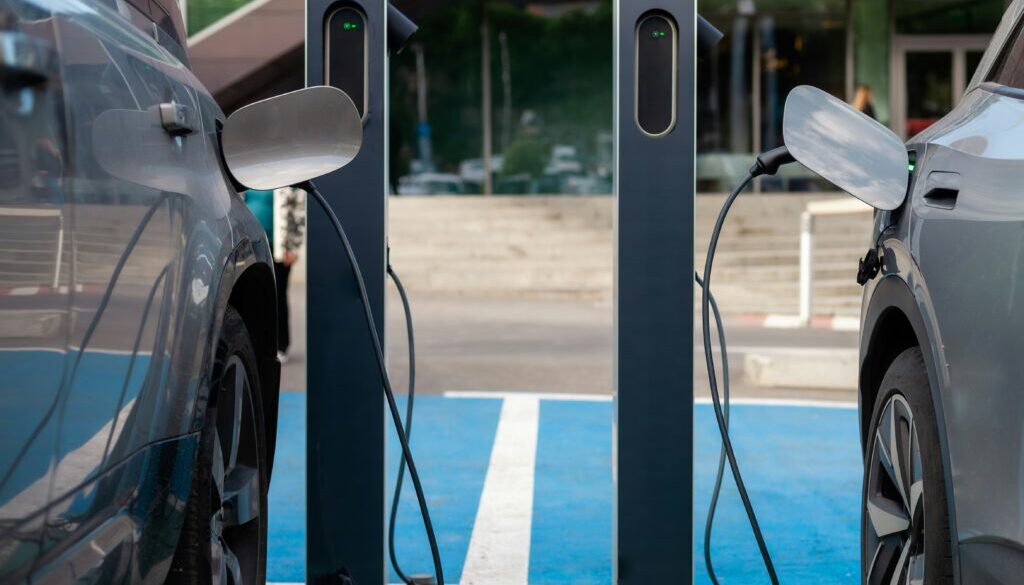Postcard from California: State and feds head for showdown over electric cars
 Of California’s dozens of landmark laws to curb climate-heating greenhouse gases and health-threatening air pollution, none is more ambitious than the rule that by 2035 all new passenger cars and trucks sold must be zero-emission vehicles (ZEVs) that run on electricity.
Of California’s dozens of landmark laws to curb climate-heating greenhouse gases and health-threatening air pollution, none is more ambitious than the rule that by 2035 all new passenger cars and trucks sold must be zero-emission vehicles (ZEVs) that run on electricity.
Contrary to the inflammatory rhetoric of its critics, the ZEV rule does not create a total ban on gasoline or diesel vehicles. In 2035 and beyond, Californians could still drive their existing gasoline cars or buy used ones.
But by electrifying the state’s fleet over time, the rule would steadily reduce tailpipe emissions, which are by far the largest source of greenhouse gases in California. It would also slash emissions of smog-forming air contaminants, averting thousands of heart attacks and strokes and hundreds of thousands of asthma attacks.
The Institute of Transportation Studies at the University of California at Davis calls the ZEV rule “one of the most daring and controversial air quality policies ever adopted.”
California lawmakers adopted the current version of the ZEV rule in 2022. But to implement it, the state needed a waiver from the US Environmental Protection Agency (EPA), allowing California to set stricter emissions standards than federal rules.
In one of the last major acts of the Biden administration, the EPA granted the waiver Dec. 18. It was a huge milestone in California’s clean-energy transition – but it also set up a high-stakes showdown between the state and the incoming Trump administration.
During the campaign, President-elect Donald Trump vowed “on day one” to revoke the Biden administration’s more limited ZEV rule, which is aimed at making half of vehicles sold nationwide zero-emission by 2030. He also repeatedly said he will go after the California rule.
“The complete and total ban on gas-powered cars and trucks in California and every other state that follows the California rules will decimate countless US auto jobs,” Trump spokeswoman Karoline Leavitt, soon to be White House press secretary, said in a statement. She said it would “flood the United States with Chinese-made Electric Vehicles to steal our jobs, and crush working families with the crippling costs and limitations of expensive Electric Vehicles.”
Here’s where things get complicated – by the regulatory process and by politics.
Unlike the Biden rule, the California mandate can’t be undone with a stroke of Trump’s pen. It could take years for Trump’s EPA to go through the steps necessary to revoke the waiver for California the agency just granted.
During Trump’s first term, it took 18 months for his EPA to revoke the waiver for an earlier iteration of the ZEV rule. After a protracted legal battle that went all the way to the US Supreme Court, the Biden administration reinstated that waiver, allowing California to move forward with the updated rule passed in 2022.
After Trump’s revocation of the earlier waiver, California forged agreements with leading automakers to voluntarily abide by the state’s tailpipe standards through the 2026 model year. That’s when 35% of new vehicles for sale in the state must be zero-emission, with the percentage increasing each year until reaching a ban on all new gas-guzzlers.
A similar scenario could play out this time and as the largest market in the US, California has considerable leverage, according to Anne Carlson, former head of the National Transportation Safety Administration (NHTSA) under Biden.
“I think what the automakers really want is certainty about what standards they need to meet over the next several years,” Carlson told Politico. “They are not going to have that certainty with Trump threatening to roll back [Biden’s] EPA standards, NHTSA standards, and revoke the California waiver.”
It’s a tangled state of affairs. But there are still other factors that make the fate of the ZEV rule anything but certain, including:
• Trump also pledged to rescind the $7,500 federal tax credit for zero-emissions vehicles, a key provision of Biden’s historic climate law. If he does, as part of California’s strategy to “Trump-proof” its progressive agenda, Gov. Gavin Newsom says the state will offer its own identical tax credit.
• But Newsom’s office says the state’s tax credit likely would exclude Teslas, the leading seller of ZEVs in the US. That’s ostensibly to stimulate sales of other automakers’ models, but cynics see it as retribution for a decision by Tesla owner Elon Musk, who made hefty contributions to Trump’s campaign, to move Tesla’s headquarters from California to Texas.
• Automakers aren’t as ready to cut a deal with California as they were in 2020. Stellantis, parent company of Dodge and Chrysler, has agreed to abide by the standards through 2030. But in November, Toyota’s CEO said next year’s target is “impossible” to meet, and in December the auto industry lobby Alliance for Automotive Innovation said “achieving the mandates will take a miracle.”
Electric cars are not only better for the climate and public health. They’re cheaper to operate than gasoline cars and have far fewer moving parts to wear out. New ZEVs are expensive, but lightly used models already go for about the same as comparable gasoline vehicles, and China has shown that they can be mass produced at low prices.
For decades, automakers and their political allies have fought against innovations to reduce pollution or improve safety. But when they were required to add seat belts, airbags and catalytic converters and to end the use of leaded gasoline, they complied, and the auto market survived and thrived.
The climate crisis is an emergency that can’t wait. California should continue to move as quickly as possible toward an all-electric future.
- Bill Walker has more than 40 years of experience as a journalist and environmental advocate. He lives in California’s San Joaquin Valley.
(Opinion columns published in The New Lede represent the views of the individual(s) authoring the columns and not necessarily the perspectives of TNL editors.)
(Featured photo by Diana Light for Unsplash+.)



